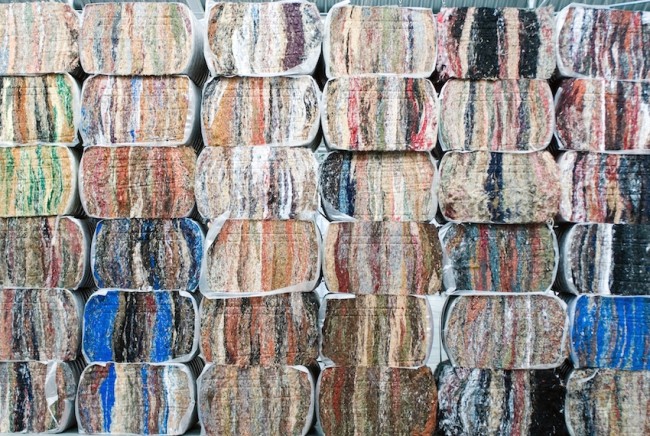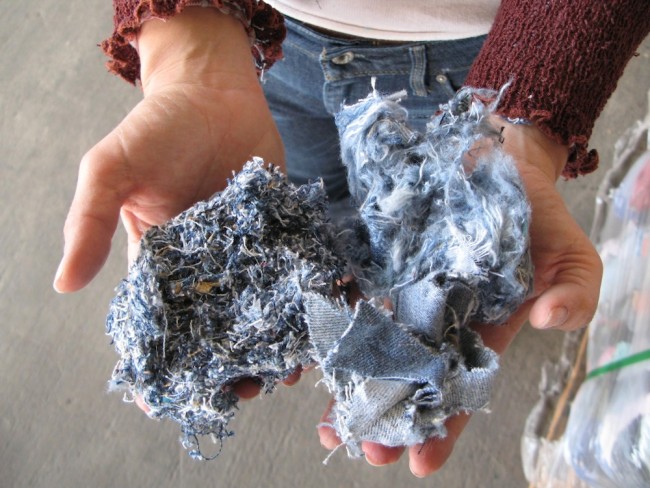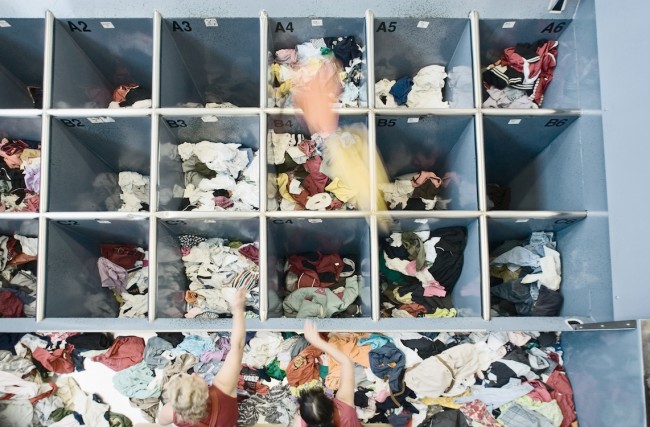
Date: 2025-04-02 Page is: DBtxt003.php txt00010969
Industry ... Textiles
Circular Economy
How Cotton Recovery is Changing the Game for Sustainable Fashion
Burgess COMMENTARY
Peter Burgess
How Cotton Recovery is Changing the Game for Sustainable Fashion

ICO Recycled Clothing Fiber Bales Hi Res
How can we sustainably shape the world of the future? How can we consume with a clear conscience? What shape does effective recycling take? These are a few of the questions that we all have to ask ourselves in light of the fact that raw materials are finite and we’re using up this planet’s resources like we have another one to go to later.
I:CO believes it has found the answer to these questions, one proved by nature herself. Just as nature reuses everything that it produces, I:CO (short for I Collect) has created a closed-loop system in which textiles and shoes can be recycled and remade into new products.
The fashion industry is the second most polluting industry in the world, next to big oil. Every year, millions of tons of textiles and shoes are produced. And every stage in a garment’s life threatens our planet and its resources. It can take more than 20,000 liters of water to produce 1 kilogram (2.2 pounds) of cotton, which is basically equivalent to a T-shirt and pair of jeans. This is a tremendous waste of our natural resources especially since the vast majority of what is produced is simply tossed in the garbage.
As an international solutions provider for clothing reuse and recycling, I:CO is tackling this issue by creating a closed-loop production cycle in which these goods can be reprocessed and reused again and again. The company’s mission is to reduce waste, preserve our natural resources and protect the environment.

ICO Denim Recycled Scrap to Fiber 180 dpi
Together with its partners, I:CO collected about 17,000 tons of clothing and shoes in 2015 (or 37 million pounds). About 40 percent of the clothing has been recycled (6.8 tons or almost 15 million pounds) — with a good portion of that being cotton goods. This is attributed to I:CO’s innovative process of sorting items for rewear and upcycling.
Rewear means that whatever is still wearable can be worn again, ensuring that the energy which once went into making the product is respected and optimally used. Upcycling means that a discarded textile or shoe is used to create a new product of equal or better quality. Things that can no longer be worn go into an upcycling process and kept in the loop so that a pair of jeans today can be turned into a new pair of jeans in the future.
“This system brings all returned clothing to its ecologically reasonable next best use,” explained I:CO’s chief marketing officer, Jennifer Gilbert. “Thus, still wearable clothing will be kept in the closed loop in its original condition for as long as possible and marketed in secondhand goods markets. By giving these garments another life through the rewear concept, we assure the conservation of resources.”
Gilbert explained that an increasing part of the company’s recycling procedures involves the processing of unwearable garments back to fibers which are used to produce new products. “When it comes to the protection of resources, rewear enables us to save the most resources possible, and recycling saves the resources that otherwise would be lost because the garments cannot be worn any longer.”
The company partners with a bunch of big brands to bring its vision to fruition, including Levi’s, Puma, Forever 21, the North Face, and fashion powerhouse H&M. In an effort to reduce the environmental impact of the fashion industry, H&M launched a clothing-collection initiative in partnership with I:CO back in 2013, to limit the amount of textiles ending up in landfills. To date, H&M has collected more than 25,000 tons of unwanted garments in stores globally.
“As much as 95 percent of textiles and clothes that are thrown away globally can be used again, and we want to offer an easy solution for the customers that today throw their old clothes away,” an H&M spokesperson told TriplePundit. “Therefore, we collect clothes of any brand and any condition in our stores globally.”
In February 2014, H&M launched the first line of products made of recycled textile fibers from garments collected in the company’s Garment Collecting Initiative. The garments, which were made from recycled cotton, included five classic denim pieces, such as jeans and jackets, for men and women.
This serves as an example of how H&M is closing the loop in textiles, and the aim is to use more material from recycled post-consumer garments in the future. “Denim garments today can contain only 20 percent recycled cotton. To increase this share without losing quality, we need more technological innovation,” the company explained. “We are working hard to overcome the challenge, and we are investing in the innovation we need to create a closed loop.”

ICO Clothing Sorting UpClose hi res
So, how does the process work? Once the customer’s clothing is collected by H&M, it is picked up from the store, consolidated, and then transported to a sorting plant where it is sorted by hand and categorized according to its next best possible use. The sorting process is based on the waste hierarchy criteria which states that all products fit for wear are to be sorted out to continue in their original form as long as possible.
A pair of jeans that has too many holes in it cannot be reworn so it is recycled according to its characteristics. The cotton denim jeans are shredded and pulled until only the fibers are left. A big portion of these fibers are used in insulation material, and some are mixed with virgin fibers to produce new fabrics, which in turn would be used to produce new clothes.
The recycling processes within the I:CO infrastructure do not involve the use of water, pesticides or any other chemicals. Additionally, following the company’s intention to help retailers take on end-of-use product responsibility, the I:CO team is always furthering its knowledge of sustainable/ethical business practices by holding workshops which also involve sustainable matters and implementing solutions.
“We are grateful to collaborate with such an innovative, globally-conscious partner as H&M who is determined to take on their product responsibility and help create a more sustainable future for the industry and communities around the globe,” Gilbert told us. “Furthermore, we appreciate H&M’s commitment, in cooperation with us, to promote the closed loop worldwide.”
Image credit: I:CO
Joi Sears Joi M. Sears is the Founder and Creative Director of Free People International, a social enterprise which specializes in offering creative solutions to the world's biggest social, environmental and economic challenges through the arts, design thinking and social innovation. FOLLOW JOI SEARS @4FREEPEOPLE